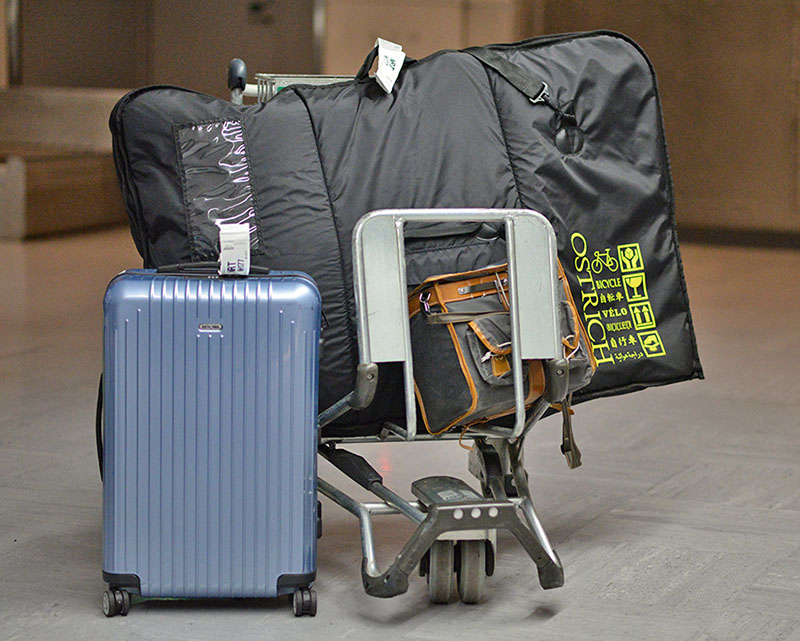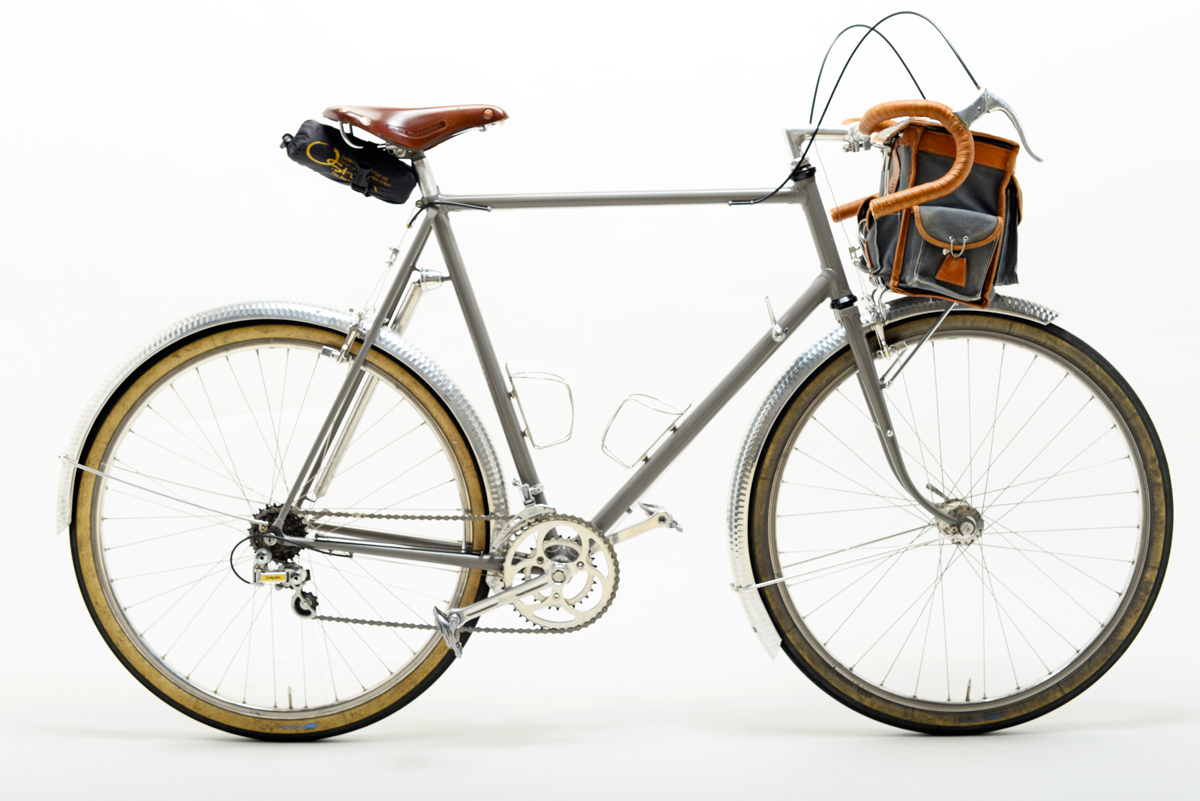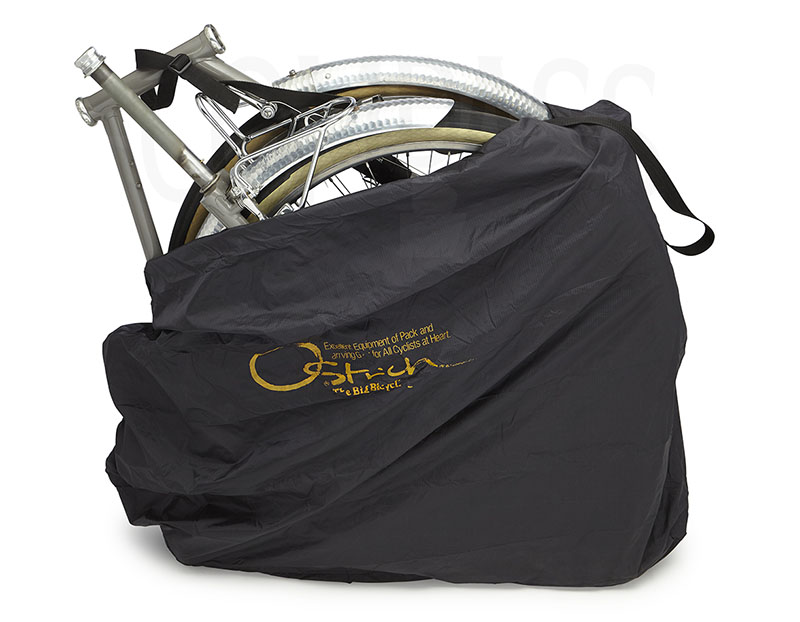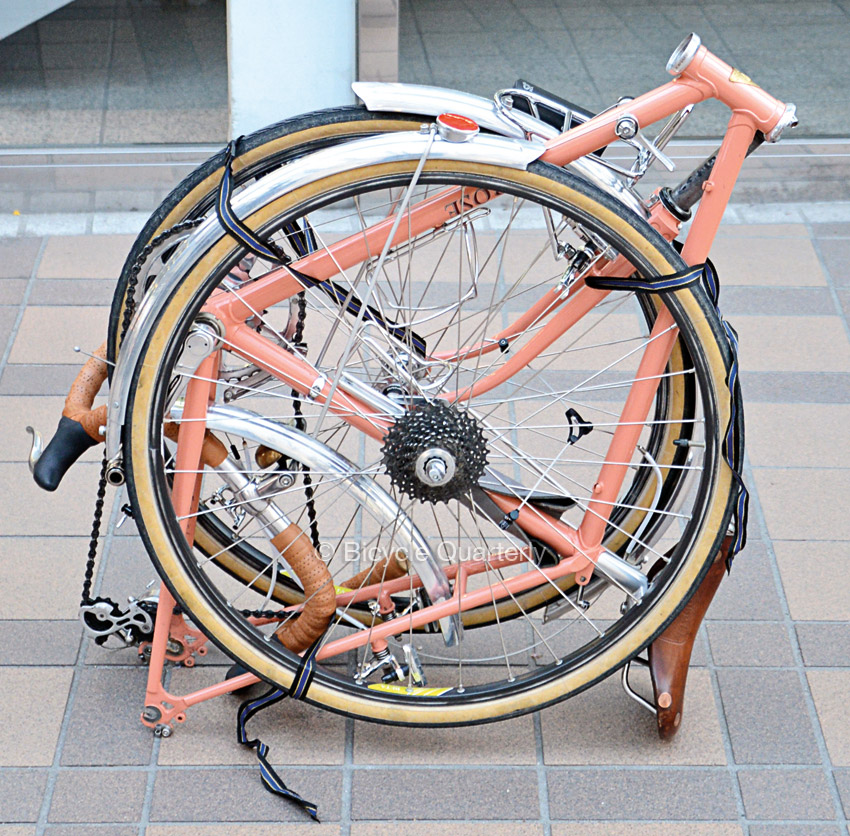How Small is a Rinko Bike?

When we introduced the idea of Rinko bikes to our readers and customers, there were some questions whether they could fit within the airline luggage requirements, or whether they’d have to pay oversize luggage fees. I’ve flown with Rinko bikes many times, and never paid a surcharge because the bag was too big.
The Ostrich OS-500 Airplane Bag in the photo looks big, because it is – it’s designed for all kinds of bikes, not just the Alps/Hirose system of Rinko that I use. It is far bigger than the Rinko bike inside, so I usually tape the excess to wrap around the bag. (The photo doesn’t show tape, because when the airline employees saw how much I could tape the bag, they simply said: “Don’t bother, it’s OK.”)
I did have to pay once, when Delta decided that because it was a bicycle, it had to pay the surcharge, no matter the size. But how big is a Rinko bike really?

To find out, I measured two Rinko bikes. One is very small, the other rather large. Here are the measurements:

- My Mule (above) is a 650B randonneur bike with a 60 cm frame (c-t), full fenders, racks and lights. Packed into its Rinko bag, it measures 79 x 83 x 23 cm. The airline dimension comes to 186 cm, or 73 inches.

- BQ contributor Natsuko Hirose’s C. S. Hirose has a 47 cm frame and 26″ wheels. It measures 77 x 81 x 22 cm, for a total of 180 cm, or 71 inches.
On the face of it, both bikes are larger than the airline size limit of 158 cm (62 inches). Yet both have flown multiple times without paying a surcharge. The reason is simple: The package is shaped like a parallelogram. If you place it between two vertical walls, you’ll get the measurements I took. But when you take a tape measure and measure along the top, it’s actually quite a bit shorter. The bottom also is shorter. Riders of Ritchey’s Breakaway system have reported the same: In theory, the bike is a bit larger than the luggage requirement, but in practice, it usually is fine.
That leads to the second question: How secure is your bike in the OS-500 Rinko bag? That depends on your airline. We’ve had good experiences with Japanese airlines, but other airlines aren’t as careful with your luggage.
Generally for flying, there are two approaches: Either make it very clear that the bag contains a bike that is fragile, so baggage handlers are careful. I once flew (on the airline’s advice) with another bike in a clear plastic bag, and it arrived just fine. The alternative is to protect the bike so much that it will survive almost any abuse – with a sturdy hardshell case. The in-between solutions, like cardboard boxes, are the worst – they hide the bike so that it’s not clear how fragile the package’s content really is, yet they offer next to no protection from it getting crushed. The OS-500 bag has some padding, but it says in multiple languages that a bicycle is inside.
Maybe we’ll offer a small hardshell case for Rinko bikes in the future. It would be relatively easy to carry, perhaps even as a backpack – especially when compared to the bulky hardshell cases that are available currently. If you are arriving and leaving at different airports, you could even ship it from the start point to the end point of your trip… But that is a future project. For now, we offer numerous parts that make building a travel bike much easier.
Click here for more information on our Rinko products.
Update 08/2022: Since this post was written, most airlines have stopped charging for bicycles. Thus, Rinko bikes (and other bikes) cost the same as any other piece of luggage. Also, soft cases for bicycles have become common, as airline baggage handlers now seem to handle bikes with more care than in the past.


